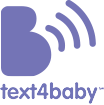Resources for New Moms
- Baby’s Development
- Tips & Resources
- Feeding Baby
- Health & Safety
- Well-Child Visits & Vaccines
- Well-Child Visit Guides
- Vaccines
- Finding Free Vaccines
- Making Shots Less Stressful
- Protect Baby from Pertussis (Whooping Cough)
- Vaccine Information for Babies
- Vaccines: DTaP
- Vaccines: MMRV
- Vaccines: Hepatitis A
- Vaccines: Hepatitis B
- Vaccines: Hib
- Vaccines: Rotavirus
- Vaccines: PCV
- Vaccines: Polio (IPV)
- Vaccines: Seasonal Flu
- Vaccines: Varicella
- Parenting
What Your Baby is Learning: 9 to 12 months
A 9-month-old is curious about everything, but has a short attention span. Two to three minutes is the most they will spend with a single toy. By 12 months, they may be willing to sit for as long as 15 minutes with an interesting toy.
Great toys at this age are things you can find around the house, like wooden spoons, egg cartons, and plastic containers of all shapes and sizes. Your baby will be especially interested in things that differ just a bit from what they already know, so if they’re bored with the oatmeal box they’ve been playing with, you can get them interested again by putting a ball inside. These small changes help them learn what is new and different.
Often your baby won’t need your help to find new things. As soon as babies can crawl, they‘ll be off and will want to go through drawers, and cabinets. Put locks on any drawers and cabinets that your baby should not go in and baby gates around stairs. Your baby will never get tired of dropping, rolling, throwing, or waving things. This may look like random play to you, but it’s your child’s way of finding out how the world works. Your baby will develop ideas about shapes (some things roll, and others don’t), textures (things can be scratchy, soft, or smooth), and sizes (some things fit inside each other). Help baby understand textures by naming them as they touch things.
Try hiding the toy under a scarf or blanket and then removing it when he’s not looking. Your 8-month-old will be puzzled. By 10 months, baby will be so certain that the toy is still there that they will continue looking for it.
As baby approaches their first birthday, your child will understand that certain things have a purpose. For example, instead of treating a toy telephone as an interesting object to be chewed, poked, and banged, they’ll put it to their ear just as they have seen you do. You can help by giving baby things like a hairbrush or cup and clapping when they use it in the right way.
Games for your 10- to 12- month old
Here are some fun game ideas to try with your 10- to 12-month-old:
- Give your baby a box that’s easy to open (like a shoe box) and show them how to put things inside and take them out.
- When your baby can stand up on their feet, you can help them try to get toys by putting them just out of reach, like at the end of the couch. Try acting like your baby by putting one of your toys, like your cell phone, across the room and walk on your knees toward it. Your baby might find this fun and join you!
- Help your baby push objects around the room. Push toys, laundry baskets, and large empty boxes work well.
- Try making a ridiculous noise and then nodding at your baby to try it. Your baby might make it or make their own noise, which you can imitate. Or you can make up a new noise of your own.
- Bring plastic cups, yogurt containers, funnels, and squeeze bottles into the bath along with any of your baby’s plastic toys.9

